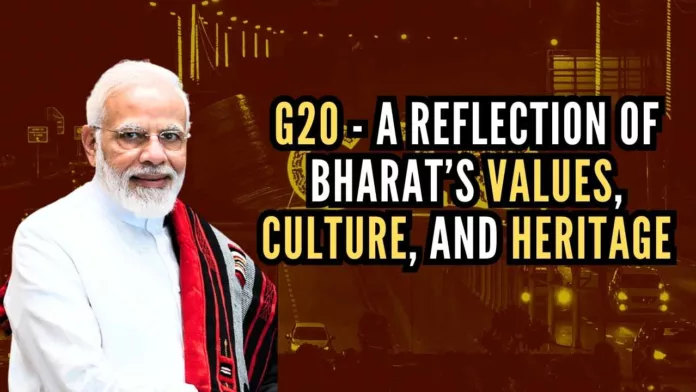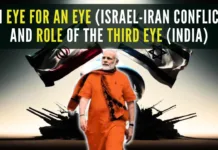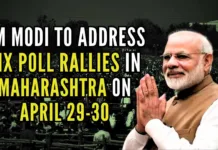
G20 was a window to highlight Sanatan Dharma
Everyone must have noticed how prominently “Bharat” was displayed on G20 poster boards around Delhi and its official communications with the rest of the world. However, it did not catch the attention of the newly formed I.N.D.I.A. alliance until the G20 dinner invitation by President Murmu read, “President of Bharat.” If that was not enough, the placard on the table occupied by Prime Minister Modi as G20 President also prominently and visibly had Bharat. It instantly became a political controversy as Bharat approaches its Parliamentary elections in 2024.
One can ask what is in the name? Without diving into history, the highly visible “Bharat,” (that is India according to the Constitution) is an ancient name going back to early scriptures. Suffice to quote the following Why not India[1], “On page no. 789 of 1900’s Oxford Dictionary India means offensive, criminal mind people, and that was done to disrespect Bharat Mata and our dignity.” The evil Colonialists named our country ‘India’ as an expression of their disdain toward us, the Bhartiya.
India’s Minister of External Affairs, S Jaishankar, said in an interview, “When you say Bharat,” it evokes a “sense, a meaning and a connotation.” The ancient name Bharat also signifies our deep-rooted association with the Sanatan Dharma encompassing the religious, cultural, and social values, customs, and traditions.
A recent article in the Pgurus, discussed the significance of the word Bharat while distancing itself from the controversy. This article chooses the latter, particularly, how well Bharat was visible in a successful global G20 in the decked-up Dulhan Delhi[2].
In the current political context, the leaders of the I.N.D.I.A. (Ineffectual Nexus for Dysfunctional India Again) alliance must be in awe[3]. Never before, Dulhan Delhi had the name Bharat as visible to the world starting with the newly built Bharat Mandapam for hosting G20. Bharat was seen and used by the citizens and thousands of G20 participants alike during G20 and about two hundred meetings and events in sixty cities preceding it. They could not escape Bharat.
The rest is history for the political opposition I.N.D.I.A. alliance whether the special Parliamentary session calls for a constitutional change for a permanent name change to Bharat. The world already knows that Bharat is in the hearts and minds of Bhartiya who believe in and stand for Jai Bharat.
The G20 exposed the significance of Bharat not only in name but also exhibited Bharat’s ancient Dharmic values, samskaras, culture, heritage, and traditions. Even the branding of Bharat could not be more effective where possible as discussed below:
- The G20 logo for 2023 was unveiled by Prime Minister Modi in 2022 in Bali, Indonesia. It showed the planet Earth sitting atop a lotus flower. The lotus flower is the national flower of Bharat and the Goddess of wealth, Lakshmi, also sits atop a lotus flower. In a Tweet, Modi said that the lotus flower is “a representation of hope,” and “no matter how adverse the circumstances are the lotus still blooms.”
The symbol of the lotus in the G20 logo is a representation of hope. pic.twitter.com/HTceHGsbFu
— PMO India (@PMOIndia) November 8, 2022
- During all the meetings in different cities before the G20 Summit, the local culture, traditions, and/ or tourism were prominently promoted and/or shared with the visiting delegates. For example, while in Kashmir, they were given walnuts, saffron, and papier-mâché gifts and taken for boat rides on the pristine Dal Lake. It was a yoga session in the south Indian temple town of Hampi and quaint heritage walks to palaces and forts in Indore (Madhya Pradesh). It was always a cultural tour of ancient Bharat wherever the delegates went.
- The theme for G20 in the ancient Sanskrit language, “Vasudeva Kutumbakam (World is one family)” was in itself an identity of Bharat rooted in its language.
- The iconic Shiva Nataraja in front of the Bharat Mandapam could not escape anyone’s eyes attending the G20. The Nataraja, the Lord of dance, is the tallest (27 feet) bronze icon as of now. This form of the Lord is a synthesis of ancient Bharat’s religion, philosophy, art, craft, and science.
- The shape of the Bharat Mandapam building itself is inspired by the elegant form of the Shankha (conch shell). It is associated with Lord Vishnu and Goddess Laxmi in Hindu mythology. It is believed that the blowing of the Shankh produces a sound that has the potential to destroy evil and sin. The unique architecture of Mandapam with modern amenities and “Bharat’s rich traditions,” symbolized the nation’s confidence in its heritage.
- The homemade Modi mantra, “Sab ka Saath, Sab ka Vikas, Sab ka Vishwas, Sab ka Prayas” (Everyone’s support, everyone’s development, everyone’s trust, everyone’s efforts) went global in G20. Modi carefully cited the ”global trust deficit” as one of the issues which could be tackled if we all worked together and trusted everyone in the development of the world as one family.
- The Dharma Chakra from Konark’s Sun God temple in Odisha inside the Mandapam was the chosen place for greeting the world leaders and the photo opportunity. A relic from the 12th century, the Sun God has a huge framework, symmetry, precision, and detailed artwork that never ceases to astound visitors. Modi took time to explain its history and significance to many G20 leaders.
- During the exquisite dinner hosted by President Murmu, the ruins of Nalanda University, one of the oldest educational institutes in the world, was selected as the background for a photo opportunity with the dignitaries. Nalanda was in operation between the fifth century and the 12th century. Its legacy goes back to Buddha’s and Mahavira’s era reflecting ancient advancement towards disseminating knowledge and wisdom. It embraces diversity, meritocracy, freedom of thought, collective governance, autonomy, and knowledge all of which align with the core principles of democracy. As one of the earliest international universities in the world, Nalanda, a living testament to the enduring spirit of Bharat’s advanced educational pursuit, was committed to building a harmonious world community in alignment with Vasudhaiva Kutumbakam.
- Vegetarian dishes in the dinner have roots in the country’s cultural, religious, and philosophical traditions. The vegetarianism is primarily related to promoting non-violence, compassion for all living beings, and the health-related virtues of a plant-based diet[5]. The delicacies were as diverse as the country with famous cuisine from each State and even the countries represented by G20 leaders. A more intriguing aspect of the dinner was a millet-heavy menu[5]. It is important to note that Bharat is the largest producer of millet which for long has been considered a ‘poor man’s food.’ It received global attention when the UN declared 2023 as the International Year of Millets at Modi’s request. It was a great marketing strategy and promotion of Bharat’s millet globally as a healthy food.
- Another ancient value observed by the dignitaries was their visit to Mahatma Gandhi Samadhi (memorial) without the shoes. It is a common practice in Bharat to go without shoes when visiting places of worship and other sacred places. It has both religious and scientific significance[6]. Removing dusty/ dirty shoes allows for the cleanliness (when possible, people wash their feet) and sanctity of the sacred places. Gandhi Memorial is a shrine of peace and non-violence. The footwear, made of leather from dead animals is not allowed in the places of worship.
Call it Modi magic, superb strategy, strong political statement, meticulous planning, master stroke, diplomacy, and/ or sheer luck, the G20 was a window to highlight Sanatan Dharma. Modi’s team was remarkably successful in establishing Bharat’s global diplomacy while keeping the leaders of the I.N.D.I.A. alliance perplexed and baffled.
Note:
1. Text in Blue points to additional data on the topic.
2. The views expressed here are those of the author and do not necessarily represent or reflect the views of PGurus.
Reference:
[1] What is the meaning of word India? Was the country deliberately named as ‘India’ as mentioned in 1900’s Oxford dictionary? – Quora
[2] Three notable triumphs of G20 in “Dulhan” Delhi – Sep 12, 2023, PGurus.com
[3] Ineffectual Nexus for Dysfunctional India Again (I.N.D.I.A.) – Jul 25, 2023, PGurus.com
[4] How did vegetarianism come to be associated with Indian culture? – Quora
[5] Hotels prepare to wow G20 delegates with their special millets menu – Aug 31, 2023, The Indian Express
[6] Why do we go to temples barefoot? – Nov 18, 2021, Pujayagna
For all the latest updates, download PGurus App.
- An Eye for an Eye (Israel-Iran conflict) and role of the Third Eye (India) - April 29, 2024
- Education and election in Bharat: Race to the top - April 16, 2024
- Kejriwal: “An Insignificant Man” or a corrupt politician with impending prison term - March 24, 2024










